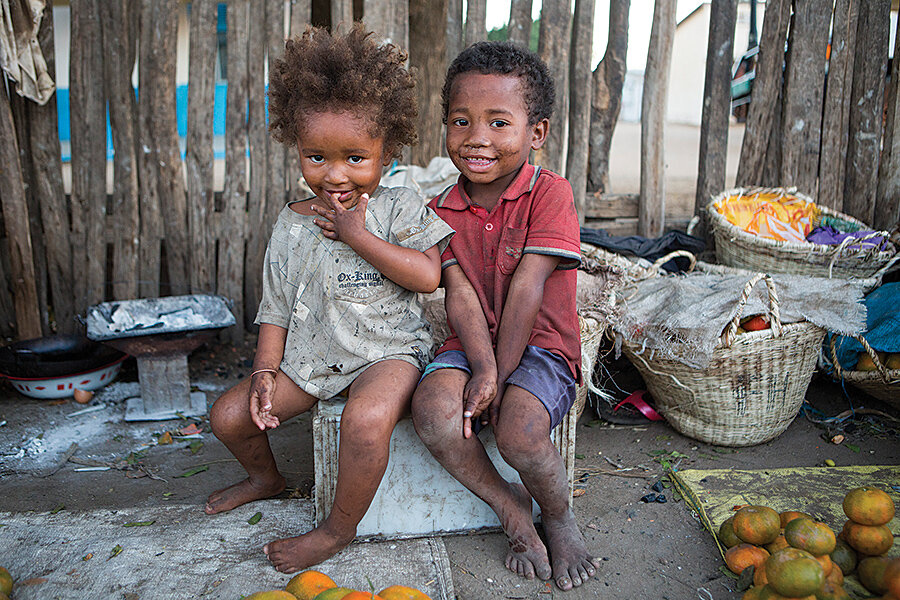What I saw, and what she knows
Madagascar is not turning out to be the paradise I expected. I am on assignment here for The Christian Science Monitor to report on drought relief, chronic malnutrition, and the prevention of famine – although most people (myself included) picture this country as the land of adorable lemurs. The island nation off the coast of Southern Africa, about the size of France and Belgium combined, is struggling. A reporter and I are here to find out who’s helping.
After a jarring, three-plus-hour ride in a UNICEF van, we arrive in Ambovombe, a small town with a dirt road through the center of it that is bustling with traffic. Peter immediately heads over to the hospital to speak with a local doctor on our topics of interest – in French. Since I don’t need to photograph the background interview with the doctor, and I wouldn’t understand the interview anyway, I decide to wander out to the road and try to look inconspicuous (fat chance).
I raise my camera tentatively to get some images before the sun goes down. These would be my first photos in country. I’ve never been to Madagascar before, and until you’ve actually photographed in a place, you don’t know how people will respond to the camera. Will they duck and cover? Hiss and yell? Will they be flattered? Affronted?
I photograph a handsome man who leans against a wall by a kiosk in the golden light of dusk. No reaction. OK. I take a breath. Then I see a guy nearby wearing a great hat – they seem to be big on hats here – and a skirt as a sort of poncho. (He’s carrying it off beautifully, I might add.) He pretends he doesn’t notice me. So far, so good. I start photographing with more ease. After a while, everyone within a 20-yard radius has noticed me. Some are calling out to each other, playfully taunting those I’ve focused on.
The road is lined with vendors selling cooked food, clothing, produce, home goods. Pedestrians jostle by, returning home at the end of the day. The road itself is filled with vans, trucks, SUVs (most of them associated with nongovernmental organizations), a few sedans (how they made the trip on that rough road I’ll never know), and zebu carts. Zebus are docile cattle with distinctive humps between their shoulders and wonderful pointed horns. They are the draft animals here.
Soon a vendor – a mother – encourages me to photograph her two young children. I hesitate a moment: They are dressed in filthy clothes. One of them may not even have any pants on – not because her parents are neglectful, but because they cannot afford them. Shoes are far beyond the means of many. People live hand to mouth. Ninety-two percent of Madagascar’s population lives on less than $2 a day. This family is selling oranges, a few oranges displayed on worn-out white tarps.
Their mother really wants me to photograph them.
This happens everywhere I go. Parents, proud of their children, ask me to take a photo, perhaps because I am someone from far away with a really big camera – two really big cameras in fact. I’ve taken this photo of cute smiling children staring into my lens over and over. I don’t usually save the image for our photo archives.
But I saved this one.
Why? Two reasons, both of them universal. First, their body language: the way they squeeze their shoulders together, tuck their hands between their knees, and look out at me from under their brows. I’ve taken this photo in Cuba, Russia, the United States – name the place. Second: the children’s mother. It’s something so powerful yet so common we sometimes miss it. This mom, despite all the disadvantages so obvious to an outsider’s eyes, finds in her children something she wants a photograph to commemorate. That’s because she sees a different picture: She sees them with a mother’s heart. As should we all.







